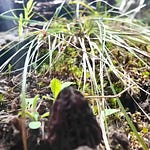The drive to go to Japan
I started working in restaurants when I was 15. I didn’t know much — just that I loved the energy of the kitchen. One day, a Michelin-starred chef from Japan came through. He walked in and the entire kitchen shifted. Everyone treated him with a level of respect I hadn’t seen before — like royalty.
I asked, “Where did he train?” They told me Japan.
I said, “Then that’s where I’m going.”
They laughed.
“An American-raised kid like you? No way you’ll survive that environment.”
They weren’t being cruel. Just realistic. Japan’s kitchens are known for their discipline, their precision, and their brutal work ethic. But four months later, I booked a one-way ticket and packed a single duffel bag. I moved to Osaka to attend Tsuji Culinary Institute — I was 18.
Everything was different. The language, the customs, the rhythm of the kitchen. But I didn’t go to stand out. I went to start from scratch.
And the very first dish I learned there?
Japanese egg drop soup — Suiji Tamago Toji.
A Lesson in Restraint
It wasn’t flashy. It didn’t have garnishes or a dramatic plating moment. But it taught me something more important: how to recognize and respect simplicity.
This soup is made with dashi — a clean, umami-rich stock made from bonito flakes and kombu. It’s seasoned lightly, then swirled into motion before you add the egg, forming soft ribbons that cook in the heat of the broth. A touch of fresh ginger juice at the end lifts the whole thing.
It’s the kind of dish that forces you to pay attention. There’s no cover-up — just balance, timing, and care.
Japanese Egg Drop Soup (Suiji Tamago Toji)
Ingredients (Serves 2):
2 cups dashi (recipe below)
1/4 tsp sea salt (adjust to taste)
2 tsp usukuchi soy sauce
1/2 tsp mirin (optional, for depth if needed)
1 egg, beaten
1/2 tsp freshly grated ginger juice
Optional: sliced scallions, yuzu zest, mitsuba
Quick Dashi Recipe:
2 cups water
1 piece kombu (about 4 inches)
1 cup loosely packed katsuobushi (bonito flakes)
Combine water and kombu in a pot. Slowly heat until just below boiling.
Remove kombu, add katsuobushi, and simmer for 30 seconds.
Turn off heat. Let sit 2-3 minutes. Strain.
Soup Instructions:
In a saucepan, bring dashi to a gentle simmer.
Season with salt and usukuchi soy. Taste and adjust. Add mirin if needed.
Once simmering, stir the broth in a circular motion to create a whirlpool.
Slowly pour in the egg, letting it form soft ribbons as it sets.
Turn off the heat. Skim any scum for a clear finish.
Add ginger juice just before serving.
Serve hot. No frills. Just a bowl of clarity.
What It Taught Me
That first bowl wasn’t just a dish — it was a turning point. It taught me that mastery doesn’t always show up in complexity. Sometimes it’s in the restraint. In holding back. In letting ingredients speak for themselves.
This soup is where I learned that Japanese cuisine isn't about boldness. It’s about intention. Every movement, every seasoning, every silence in the kitchen — it all means something.
I’ve cooked in a lot of kitchens since. But this is the one dish I still come back to. When things feel loud or complicated, I make this.
Because sometimes the simplest dishes are the ones that stay with you forever.








Share this post